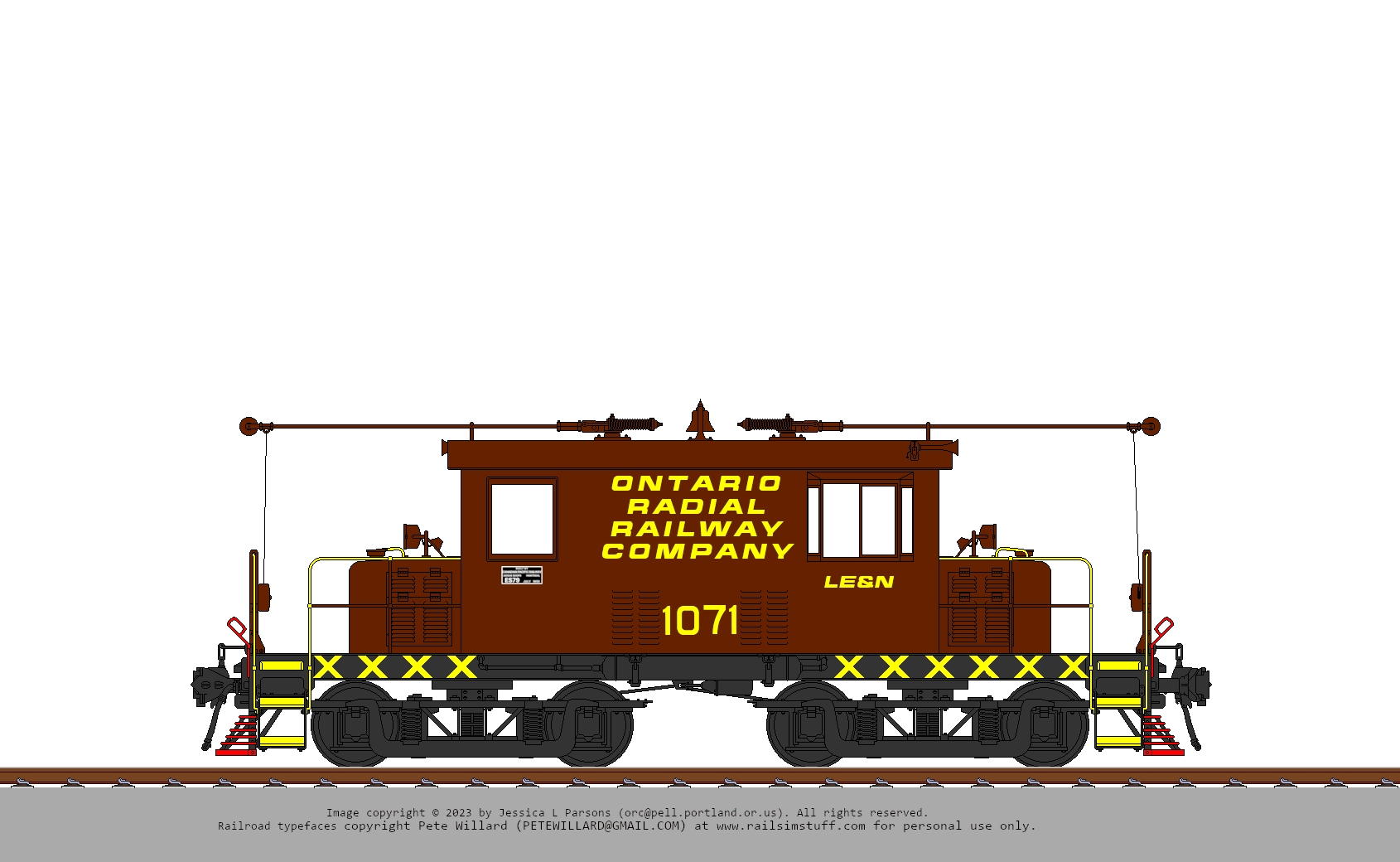In the immediate post-war years, the Brantford & Hamilton Air Line, the Toronto Suburban Railway and the Lake Erie & Northern penned agreements to allow interline traffic between the three railroads (plus a little bit of milage on the Grand River Railway to connect Galt with the joint TSR/GRR line to Guelph), which proved to be a helpful boost to revenues on the LE&N/GRR and a lifesaver for the TSR.
Until 1962, when the Canadian Pacific turned off the electrification (with the exception of the switching district in Galt) on the GRR & LE&N, and then it was back to the old regime of interchanging freight in Brantford & Galt (no more runthroughs, alas, and the TSR wasn’t healthy enough to buy – even with generous financing from GMD – diesels enough to yeet their overhead and switch over to internal combustion traction.)
After a decade of this and the TSR falling into a slow decline, the two radials (the TSR and the (now) Hamilton & Brantford) decided to merge, but instead of becoming one railroad (like the Iowa Terminal) kept the railways separate, but formed a holding company – the Ontario Radial Railway Company – to own both properties and shove money one way or another as circumstances dictated.
This company continued along, not super profitable but making enough money to support itself, until 1989, when the CP decided to fully abandon the LE&N’s section of the Simcoe subdivision. This could have been the end of these radials, but when the ORRC petitioned to abandon the TSR the LT&L stepped in and bought a sizable minority share in the company, and that money let the ORRC purchase the abandoned part of the division and string wire over it, thus restoring the through-running that disappeared a quarter century earlier.
In the middle 1990s, the ORRC merged with the Canada Southern Railway, but kept its corporate identity to keep the finances for the radials (semi-)separate from the mainlines, so when the LT&L absorbed the OSW (the combined ORRC & Canada Southern) nothing changed on that front aside from getting access to the Parsons Vale’s Portland backshop, which happily gave access to parts (& new motors) instead of having to fabricate them in-house.
After the United Railways Trust merged with CPKC, the Canadian Pacific ceded various lines in the Golden Triangle to – and was given partial control of – the ORRC, starting another round of new 1500VDC electrification threaded around the mainline 25kvac electrification that the Trust approved on the CPR.
(There are very few electric radials/interurbans left in North America, and those lines are, with the notable exception of Iowa Traction, all controlled by the Northeastern district of the United Railways Trust. This is something the Trust board, the LT&L, and the OSW are very proud of, so the ORRC continues to operate as a traditional 1500VDC trolley-pole equipped radial instead of being upgraded to a modern 25kvac system.)
